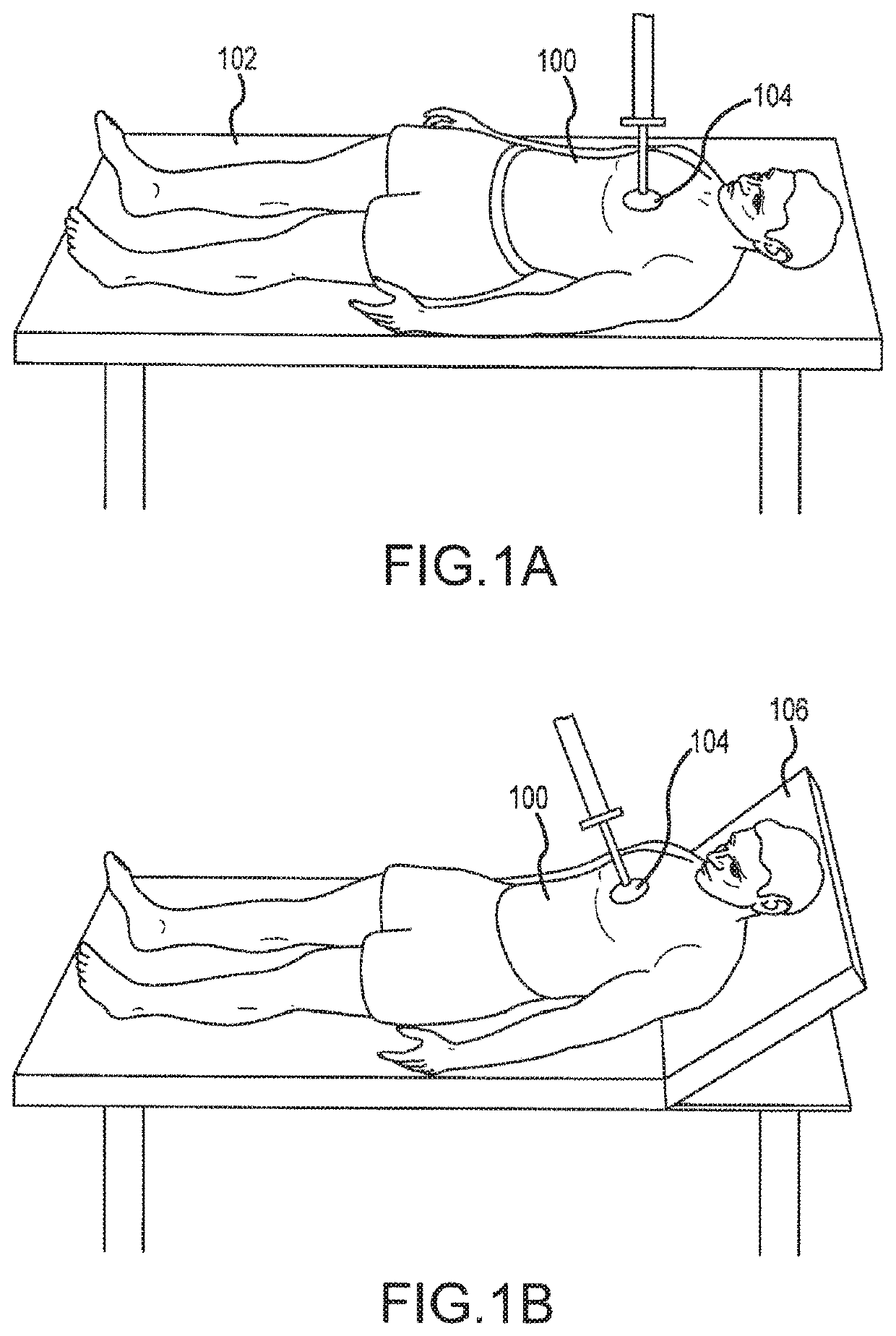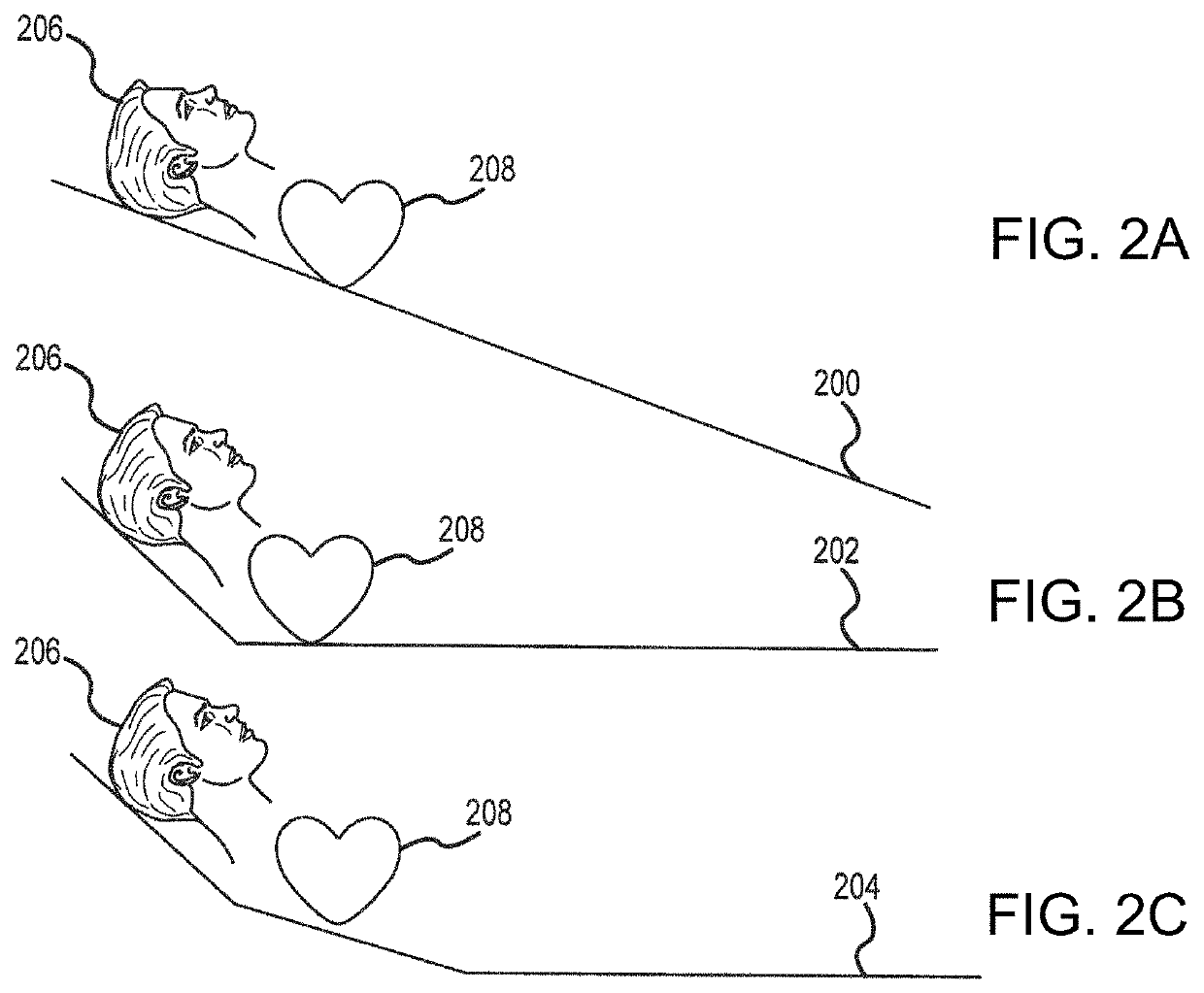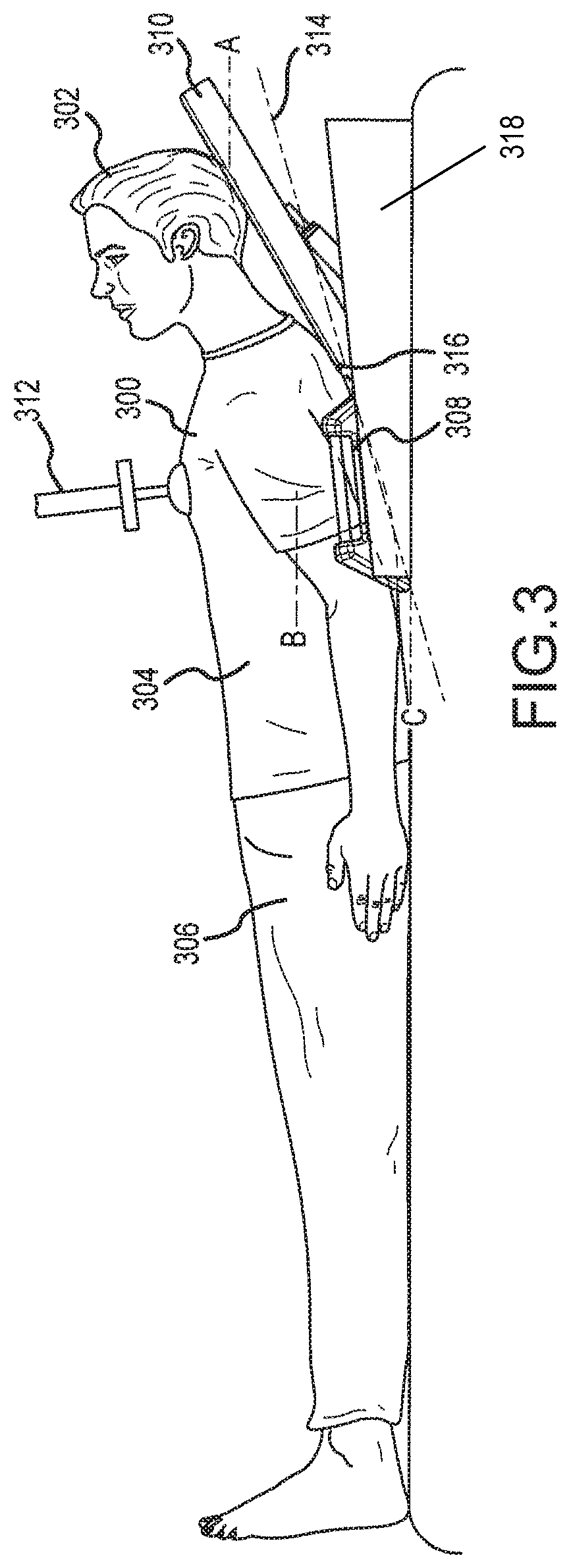Systems and methods for improved post-resuscitation recovery
a post-resuscitation recovery and system technology, applied in the field of systems and methods for improving post-resuscitation recovery, can solve the problems of increasing cerebral output, increasing cerebral perfusion pressure, and lower right-atrial pressure and intracranial pressure, and achieves cerebral output and systolic blood pressure (sbp), reducing pulmonary vascular resistance, and improving pulmonary vascular resistance.
- Summary
- Abstract
- Description
- Claims
- Application Information
AI Technical Summary
Benefits of technology
Problems solved by technology
Method used
Image
Examples
example 1
[0111
[0112]A recent study showed that head and thorax elevation during cardiopulmonary resuscitation improves cerebral perfusion in a swine model of prolonged of cardiac arrest. Most clinical CPR efforts last a minimum of 15-20 minutes. Prolonged cardiac arrest poses a potential risk when using a whole-body tilt approach to HUP CPR, since blood flow to the brain would be anticipated to decrease over time likely secondary to pooling of blood in the lower extremities. This physiology is well known from the use of head-up tilt-table testing to induce syncope. To reduce this potential risk, the use of elevation devices, such as those described herein that elevate just the head and upper thorax, demonstrated higher cerebral perfusion pressure (CerPP) in the HUP position over a period of 22 minutes with active compression decompression (ACD)+ITD CPR. With this device the head is elevated about 25 cm and the heart about 5 cm relative to the rest of the body. Building on prior studies, the ...
PUM
 Login to View More
Login to View More Abstract
Description
Claims
Application Information
 Login to View More
Login to View More - R&D
- Intellectual Property
- Life Sciences
- Materials
- Tech Scout
- Unparalleled Data Quality
- Higher Quality Content
- 60% Fewer Hallucinations
Browse by: Latest US Patents, China's latest patents, Technical Efficacy Thesaurus, Application Domain, Technology Topic, Popular Technical Reports.
© 2025 PatSnap. All rights reserved.Legal|Privacy policy|Modern Slavery Act Transparency Statement|Sitemap|About US| Contact US: help@patsnap.com



